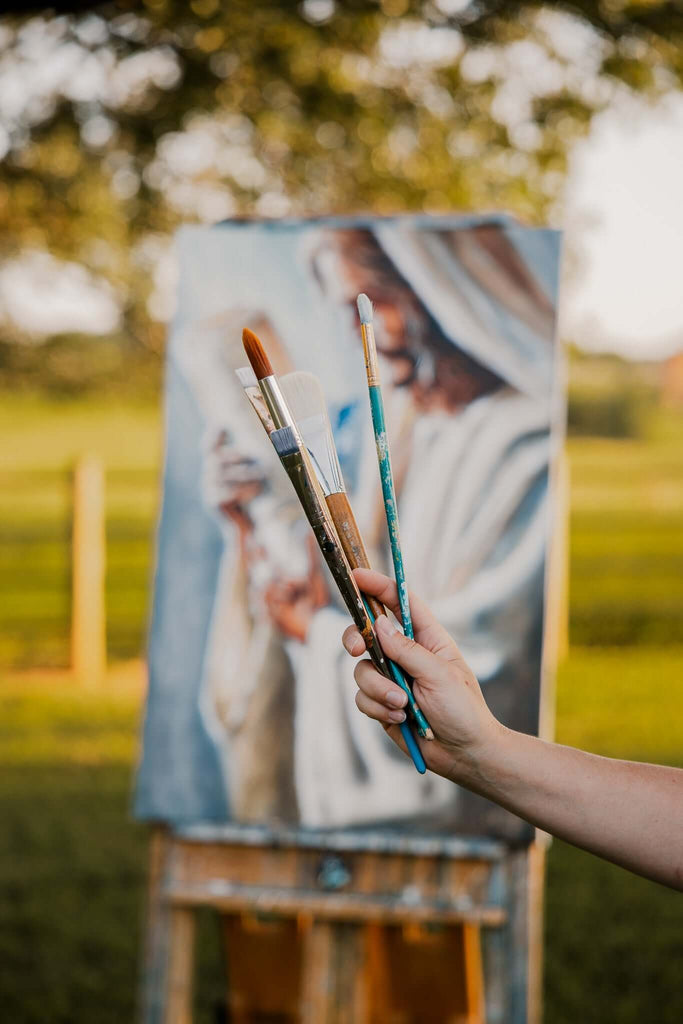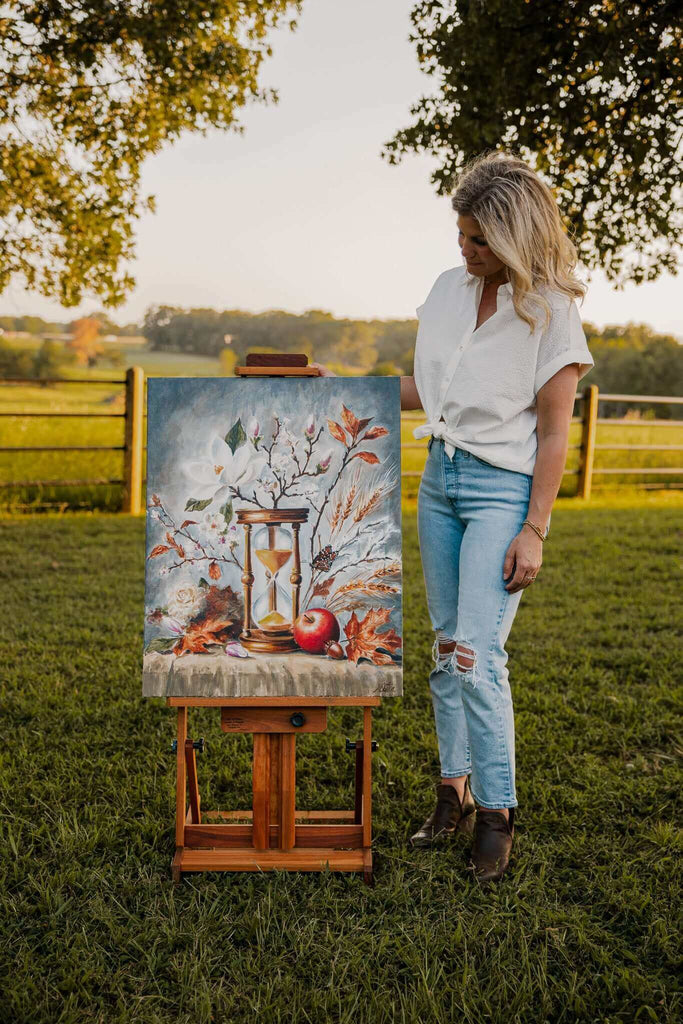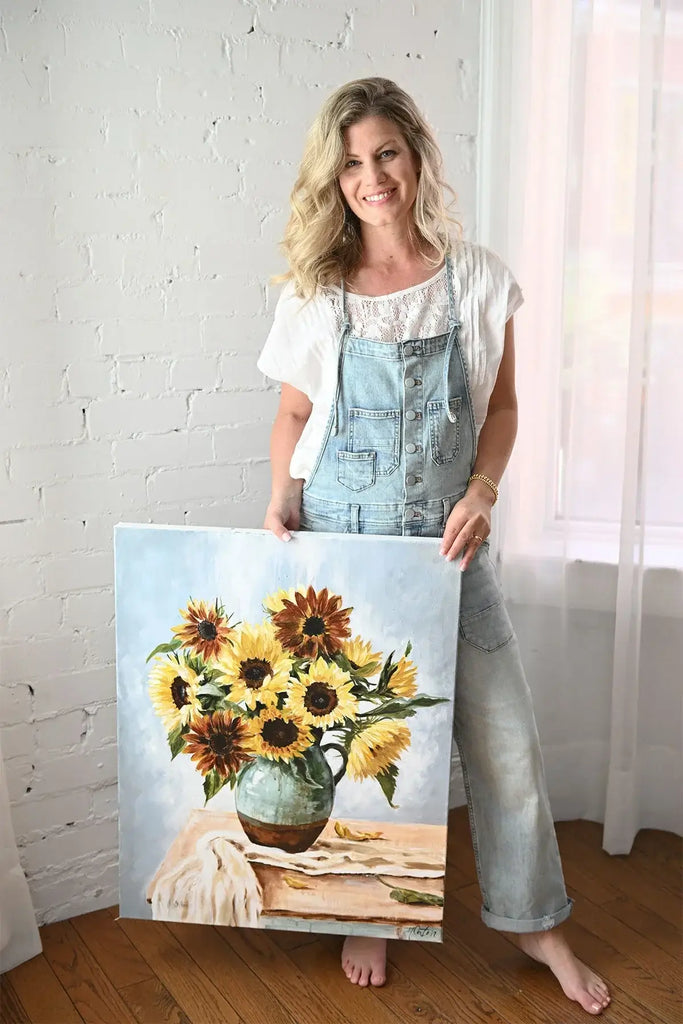How Art Becomes Worship: Integrating Biblical Art into Everyday Faith
In every brushstroke, color, and image, art has the power to tell a story. When rooted in Scripture, that story becomes more than beauty on canvas—it becomes worship. For centuries, the Church has used art to inspire awe, teach biblical truths, and create sacred spaces that draw people closer to God. Today, biblical art still carries that same power, not only in cathedrals but also in our homes, churches, and personal prayer lives.
As a Christian artist, my desire is for every piece I create to not just be seen, but to be experienced—as a doorway into God’s presence. Here are a few ways you can integrate biblical art into your everyday faith and allow it to become an act of worship.
1. Meditating with Art During Devotional Time
We often think of devotion as reading Scripture and praying, but art can become a companion in that sacred rhythm. Try this:
-
Choose a piece of art that reflects a scripture or theme God is highlighting in your life. For example, a painting of Jesus calming the storm can anchor your prayers for peace in anxious times.
-
Sit quietly with the image. Allow your eyes to rest on the colors, shapes, and symbols. Ask the Holy Spirit to speak through what you see.
-
Pray through the imagery. Let the art guide your meditation. If the painting shows a vine and branches, reflect on John 15 and what it means to remain in Him.
“I am the vine; you are the branches. If you remain in me and I in you, you will bear much fruit.” — John 15:5
Art slows us down. It draws us into stillness. And in that stillness, we often hear God’s whisper more clearly.
2. Creating Spaces of Reflection in Your Home
The walls of your home can preach. By choosing to hang biblical art, you create daily visual reminders of God’s promises.
-
Hallways or entryways: Place a piece that declares welcome and blessing, reminding all who enter that this is a house of faith.
-
Living rooms or family spaces: A large print can spark conversations with children, guests, or friends, opening doors to share faith stories.
-
Prayer corners or home offices: A small framed print by your desk or devotional chair can re-center your focus throughout the day.
“These commandments that I give you today are to be on your hearts. Impress them on your children. Talk about them when you sit at home and when you walk along the road, when you lie down and when you get up. Write them on the doorframes of your houses and on your gates.” — Deuteronomy 6:6–9
Many Collectors Club members have told me they’ve created a “faith wall” by displaying each monthly print together—a gallery of God’s Word through art that grows month by month.
3. Gifting Art for Sacred Moments
Biblical art also makes meaningful gifts for life’s holy milestones. Unlike something quickly forgotten, art carries memory, story, and spiritual encouragement for years to come.
Consider gifting a piece for:
-
Baptisms or confirmations: A visual reminder of new life in Christ.
-
Weddings or anniversaries: Artwork that symbolizes covenant, unity, or God’s faithfulness.
-
Small group leaders or pastors: A way of honoring their service and blessing their ministry space.
-
Friends walking through trials: A tangible encouragement of God’s promises when words may not be enough.
“Therefore encourage one another and build each other up, just as in fact you are doing.” — 1 Thessalonians 5:11
Art becomes more than decoration—it becomes a testimony, passed from one believer to another as an act of love and encouragement.
4. Using Art in Corporate Worship
Churches have long used stained glass, mosaics, and murals as expressions of worship. Today, prints and paintings can serve as powerful tools in worship gatherings, too.
-
Display art during sermon series. Visuals deepen the message and engage hearts in new ways.
-
Create a prayer station with artwork. Invite people to sit, reflect, and journal what the Spirit is speaking.
-
Incorporate art in worship nights. Live painting or displayed works can become a prophetic voice alongside music.
“Let the word of Christ dwell in you richly, teaching and admonishing one another in all wisdom, singing psalms and hymns and spiritual songs, with thankfulness in your hearts to God.” — Colossians 3:16
When art and worship come together, the Spirit often moves in unexpected ways.
Why It Matters
Integrating art into faith practices is not about replacing Scripture or prayer—it’s about enhancing them. Biblical art points us back to the Word, giving shape and color to God’s truth. It transforms walls, corners, and even quiet moments into places of encounter.
“Finally, brothers and sisters, whatever is true, whatever is noble, whatever is right, whatever is pure, whatever is lovely, whatever is admirable—if anything is excellent or praiseworthy—think about such things.” — Philippians 4:8
When you hang a painting, pause before a print, or give art as a gift, you’re not just enjoying creativity—you’re stepping into worship.
Closing Reflection
My prayer is that every piece of art I create would serve as more than beauty—it would be a vessel of God’s presence. Whether you’re meditating in devotion, curating a space of reflection, or gifting art to a loved one, may the images remind you that Jesus is always near.
Art is worship when it carries His story. And when we invite it into our daily rhythms, it becomes another way to behold Him.
Continue reading










